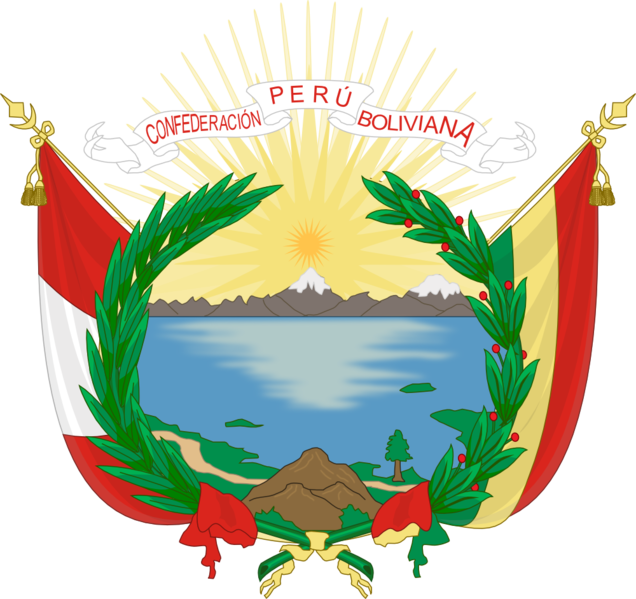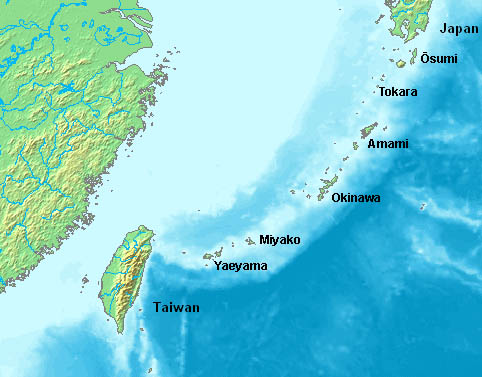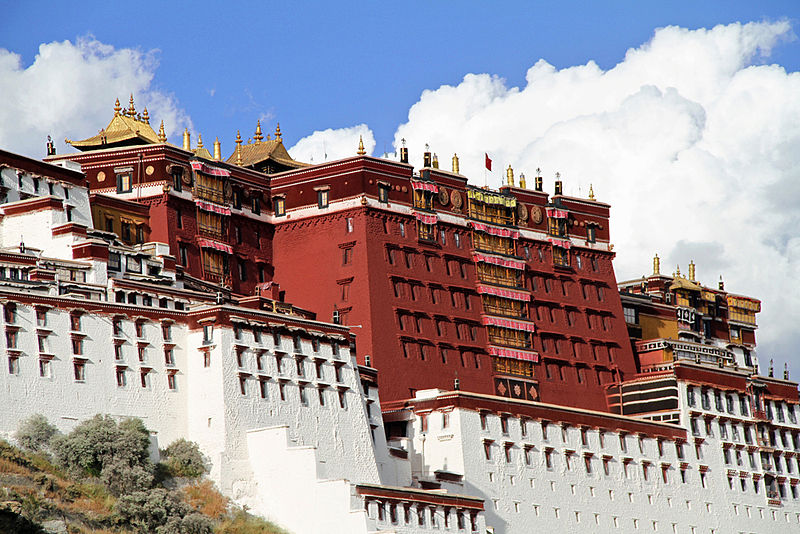Some of the most interesting countries in the world are among the least well known – like Timor Leste or Kyrgyzstan… or New Zealand. But that’s nothing. Some of the world’s most influential countries no longer exist. For one reason or another they just disappeared, be it due to foreign invasion or societal collapse. In this article we’re going to look at a handful of such countries. Some were short lived ideological experiments of the cold war. Others were great powers that lasted for centuries. Here are ten countries that disappeared.
Our Video on This:
10: Peru-Bolivian Confederation

Two centuries ago, Peru and Bolivia were part of the same massive country. Not long before, most of South America was ruled by Spain, who organized the territory into various Viceroys. Spain’s Viceroys were massive and poorly defined, grouping together disparate native ethnic groups. It’s like the Spanish are the only people worse at setting borders than the British. So when they lost control of South America it was unclear what territory should be part of what country. In this chaos, multiple new nations emerged. Among them: North Peru, South Peru, and Bolivia. Then in 1836 the president of Bolivia united them by force, creating the Peru-Bolivian Confederation.
He now controlled massive territory, and South America had a country strong enough to rival any of it’s neighbours. But this would be her downfall. Seeing the new country as a threat, Chile and Argentina declared war on her. Within a year Argentina was defeated, but Chile kept fighting – eventually invading and partitioning them into Peru and Bolivia. The Confederation had lasted just three years, but it’s legacy still affects the politics of South America today. Just decades later, Chile again went to war with Peru and Bolivia, taking coastal territory from both. These wars left Bolivia landlocked, something they have never forgiven Chile for.
9: Sikkim

India is known for it’s enormous population. But one of her 29 states has a relatively low population. That state is Sikkim – a tiny patch of land sandwiched between India and China. Until 1975 Sikkim was an independent kingdom ruled by a priest-king. The Buddhist monarchy had ruled it since 1642, at times only narrowly avoiding being absorbed by Nepal. Because of this, Sikkim agreed to become a British client state in return for protection.
Then in 1950 they did the same with India, fearing China would annex Sikkim just as they had Tibet. It was a Tibetan warrior who founded Tibet in 1642 and culturally speaking, the two peoples were almost identical. This gave China a claim to it’s land, as the rulers of Tibet. In 1967 Chinese forces moved into Sikkim and although the Indian army quickly drove them out, it really scared locals. Before long the people of Sikkim decided to become part of India and abolish their monarchy. That is how Sikkim became one of the many countries that disappeared during the 20th century.
8: Vermont Republic

Vermont is one of America’s smaller states – but is none the less powerful, being ruled by a 900 year old wizard. Yet, strangely, there was a time when Vermont was not part of the US. After the American revolution, Vermont was not officially made a state as it was still seen as part of New York. So to assert their rights, local officials in Vermont declared independence from the Unites States.
They drew up a constitution, established a currency, and even abolished slavery – which in 1777 was a big deal. By any realistic standard Vermont was not an independent country. They even established diplomatic relations with France and the Netherlands. At one point they were in talks with Quebec to rejoin the British empire. Those talks came to nothing buy all this earned Vermont a new respect. In 1791 Vermont joined the United States as it’s 14th state after 22 years of independence.
7: Ryukyu Kingdom

Asia’s Ryukyu islands are today part of Japan. But for hundreds of years they were a home to one of the most interesting countries that disappeared. In the 15th century it’s royal family emerged on the island of Okinawa, unifying the island under their rule. As the birthplace of Karate, the island has long been known for the strength of it’s warriors. In due time they had conquered most other Ryukyu islands. But they were a small and relatively weak state. So they agreed to become a tributary state, first to China and later to Japan.
Still, the Sho kings continued to rule the islands, with their own Samurai and castle and all that good stuff. Thanks to the strategic position of their islands they built extensive trade links, becoming vastly wealthy. It’s strategic value can be seen in the fact that 32 American military bases are on Okinawa today But this would be the kingdom’s downfall. In 1879 Japan officially annexed Ryukyu and overthrew it’s royal family. But locals never forgot when the Sho family ruled Okinawa. Their descendants still live there… and so does Mr Miyagi.
6: The Principality of Elba

Of all the countries that disappeared, this one is probably my favorite. It was founded by Napoleon, the funny little duck who once ruled as the most powerful man in Europe. So after he was defeated and removed from power, Napoleon’s enemies gave him an incredible gift. They created a new country for him – the principality of Elba. In 1814 he was made monarch of this tiny island just off the coast of the Italian coast. Here he ruled over a population of 12 thousand. In truth it was a prison where Napoleon had been sent into exile.
But it was still a real country, and he ran it as such. Napoleon drew up a flag, organized a military and wrote a constitution. He declared laws modernizing Elba’s small towns and even established a judicial appeal system, It was a great life. But Napoleon couldn’t take it. He had been the master of Europe and this small island simply wasn’t enough for him. So after just ten months he abandoned the island to rebuild an army and conquer France once more. When he was again defeated, the principality of Elba was dissolved.
5: Venetian Republic

For much of it’s history, Italy was not once united country, but a collection of small countries that disappeared mostly in the 19th century. Among the most successful was Venice. Built on a swampy lagoon, it’s quite surprising Venice even exists. But their swampy surroundings protected Venice from invaders, leaving them free to build a new society. They built a republic with an elected Doge acting as head of state. This turned out to be one of history’s most stable political systems. Thanks to the location of Venice, local merchants could easily sail anywhere in the Mediterranean. Wealth and resources flooded into the city, as they connected the markets of inland Europe with maritime trading routes.
Venice used this peace and prosperity to expand. They built a navy and began capturing territory along the coast of Dalmatia. This effectively gave them control of the Adriatic Sea. More and more land became Venetian territory, but they almost exclusively took land that extended Venetian trade links. The Greek islands of Crete and Paros among others. Venice was now the dominant merchant power of the Mediterranean. But then, another Italian city state with vast wealth of their own declared war on Venice. After a hundred years of war Venice and Genoa made peace. But by now they had outlived the years of their glory and faded away.
4: Republic of Formosa

Over the centuries many flags have flown over Taiwan. That’s how she became known as Formasa, a Portuguese word meaning “beautiful island”. But European rule in Taiwan was short lived. From 1662 to 1895 the island was part of China. Then Japan forced them to cede the island to them after a brief war. But the islanders themselves were not ready to become a Japanese territory. So in 1895 they declared their own country, the Republic of Formosa. At the time it was the only democratic republic in Asia, with officials elected by the people. They issued their own currency and stamps, and had this amazing looking tiger flag.

Copyright Jeff Dahl / (CC BY-SA 4.0)
The republic even had a military, boasting over a hundred thousand soldiers. But this wasn’t good enough. As the first industrialized power of Asia, Japan made short work of Formosa, ending the republic after just 5 months.
3: Republic of Galicia

If you think the last country was short lived… this one lasted less than a day. In 1931, left wing revolutionaries declared independence in the Iberian region of Galicia. To them it was the start of a new republic. But in reality their new country lasted 5 hours. It literally existed for 5 hours. So why did they think it would work? Well Galician nationalism has been going strong for centuries, thanks to it being home to several historical countries that disappeared, including a strong kingdom.
The kingdom of Galicia was founded by Germanic barbarians who took the land from Rome. There was a time when half of Spain was ruled by the Kingdom. But before long, other barbarians pushed them back into Galicia, where they largely kept to themselves. The chaotic nature of the kingdom has left many gaps in historical records. Yet in one form or another it existed into the 19th century.
2: Tibet

Tibet is a historical region now mostly controlled by China. But until 1951 she was an independent country. As a theocratic absolute monarchy, Tibet was ruled by a Dalai Lama – the spiritual leader of Tibetan Buddhists. Tibet was a very traditional and inward looking society. But that was okay for most of the early 20th century as China was distracted by it’s own civil war. Then in 1950 China’s communist party won the war, and took full control in China. One year later they invaded Tibet and removed the teenage Dalai Lama from power.
Ever since, the area has been incorporated as part of China. China needs Tibet for it’s strategic importance. As a vast mountainous region, she acts as a buffer zone between them and India. India remains the only serious long term power rival to China – and allowing Tibet to fall under their influence would pose a serious threat. That is why India granted political asylum to the Dalai Lama. It’s also why huge numbers of ethnic Chinese have been moved into Tibet, to replace it’s population with dedicated Han. Knowing this, it’s hard to see how Tibet could ever become an independent country once more.
1: Gran Colombia

Before the Peru-Bolivian confederation there were several other countries that disappeared. Among them was a South American super state. That was Gran Colombia: covering territory of modern day Venezuela, Colombia, panama, Ecuador, Guyana and Brazil. Led by Venezuelan revolutionary Simon Bolivar, it was South America’s most powerful country. Bolivar founded Gran Colombia to be a highly centralized state where the government would be all powerful, unlike America’s federal system. He dreamed of liberating all of South America to form one great nation. So Gran Colombia invaded Peru, which was still under Spanish control.
Before long Peru was also free, and Bolivar wanted to absorb it into Gran Colombia. Now, Gran Colombia drew up a new constitution. It abolished slavery, guaranteed free and fair trial and guaranteed freedom of the press. The confederation had the makings of a great, long standing country. But then everything went wrong. Gran Colombia was too big and regional division began to show. People in Peru simply didn’t see themselves as the same as Colombians. Peru rebelled, as did Venezuela, and in a matter of years the entire country was torn apart.

